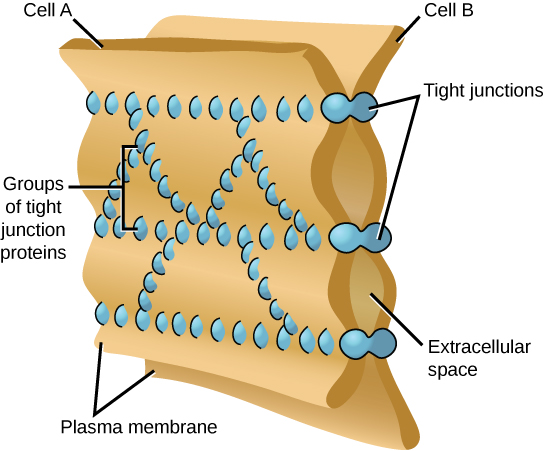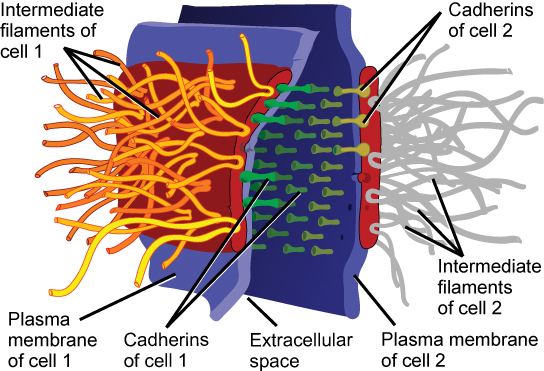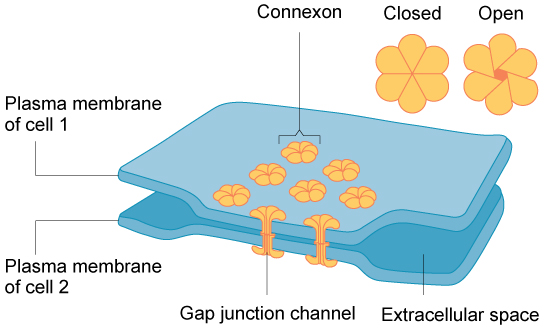Introduction to the Human Body: From Cells to Organ Systems
1/106
There's no tags or description
Looks like no tags are added yet.
Name | Mastery | Learn | Test | Matching | Spaced |
|---|
No study sessions yet.
107 Terms
The human body mainly consists of what?
Water
The study of the body’s structure
anatomy
The study of the body’s functioning
physiology
What does the body's hierarchy system start with at the top?
Atoms and molecules
What is at the bottom of the hierarchy of the human body?
Organisms
What is the order of the hierarchy of our bodies from the top to the bottom?
Atoms, water molecules, cellular level, tissue level, organ level, organ system level, and organismal level.
What is the basic unit of structure and function of all living things?
Cells
How many types of the cell does the human body contain
200
Describe the fundamental characteristics and specialized roles of human cells.
Each cell carries out basic life processes that allow the body to survive. In addition, most human cells are specialized in structure and function to carry out other specific roles.
Nerve Cells
Cells that have long projections sticking out from the body of the cell, which help carry electrical messages to other cells.
Tissue
A group of connected cells that have similar functions
What are the four basic types of human tissues?
Connective, Epithelial, Muscle, Nervous
Organ
A structure that contains two or more types of tissues that work together to do the same job.
Examples of organs
heart, brain, lungs, skin and kidneys
What are human organs organized into?
Organ Systems
Organ Systems
A group of organs that work together to carry out complex functions overall, and each organ does part of the larger job.
What do all of the organ systems of the human body normally work like?
A well oiled machine
Integumentary System
Organ System - Consists of the hair, skin, and nails. Encloses internal body structures and is the site of many sensory receptors.
Skeletal System
Organ System - Consists of the cartilage, bones, and joints. Supports the body and enables movement with the muscular system.
Muscular System
Organ System - Consists of the skeletal muscles and tendons. Enables movement with the skeletal system and helps maintain body temperature.
Nervous System
Organ System - Consists of the brain, spinal cord, and peripheral nerves. Detects and processes sensory information, while activating bodily responses.
Endocrine Syste,
Organ System - Consists of the pituitary gland, thyroid gland, pancreas, adrenal glands, testes, and ovaries. It secretes hormones and regulates bodily processes
Cardiovascular System
Organ Systems - Consists of the heart and blood vessels. Delivers oxygen and nutrients to tissues while equalizing the temperature in the body.
Lymphatic System
Organ System - consists of the nasal passage, trachea, and lungs. It removes carbon dioxide from the body and delivers oxygen to the blood.
Digestive System
Organ System - Consists of the stomach, liver, gall bladder, large intestines, and small intestines. Processes food for use by the body, and removes waste from undigested food.
Urinary System
Organ Systems - Consists of the kidneys and urinary bladder. Controls water balance in the body, while removing wastes from the blood and excreting them.
Male Reproductive System
Organ System - Consists of the epididymis and testes. They produce sex hormones and gametes, and delivers gametes to females.
Female Reproductive System
Organ System - Consists of mammary glands, ovaries, and uterus. Produces sex hormones and gametes while supporting the embryo and fetus until birth. Produces milk for infants.
controls virtually all body activities
Nervous System
secretes hormones that help to regulate these activities
Endocrine System
What do the organ systems do to function together?
They supply body cells with all the substances they need and eliminate their wastes. They also keep temperature, pH, and other conditions at just the right levels to support life.
How is the human body like a complex machine?
Organs and organ systems work together and are closely regulated by the nervous and endocrine systems. They carry out basic life functions together and maintain the body pH and tempreture
Describe the difference between human anatomy and human physiology.
Human anatomy is the study of the body’s structure, and human physiology is the study of the body’s function.
Relate cell structure to cell function, and give examples of specific cell types in the human body.
Different types of cells have different functions within the body. These cells have clear differences in their structures, which help them with their specific function.
Examples: Nerve Cells - they have long projections sticking out from the body of the cell, which help carry electrical messages to other cells.
Define tissue, and identify the four types of tissues that make up the human body.
A group of connected cells that have the same function. The four types are, epithelial, connective, muscle, and nervous
What is an organ? Give three examples of organs in the human body.
A structure that consists of two or more types of tissues that work together to do the same job. Examples are the brain, heart, lungs, skin, and kidneys.
Define organ systems. Name all examples in the human body.
A group of organs that work together to carry out the overall function, and each organ has a part in the overall job. Examples are the integumentary system, skeletal system, muscular system, nervous system, endocrine system, cardiovascular system, lymphatic system, respiratory system, digestive system, urinary system, and male and female reproductive systems.
How is the human body regulated so all of its organs and organ systems work together?
The nervous and endocrine systems work together to maintain homeostasis. The nervous system coordinates organ functions, where the endocrine system is a network of glands that use chemical signals to regulate slower, long-term bodily processes like growth, metabolism, and reproduction
Are the cells in a tissue all the same?
No, all the cells in the tissue do not have to be the same; they just have to work together.
What is the Epithelial tissue made up of?
cells that line the inner and outer body surfaces, such as the skin and the inner surface of the digestive tract.
Mucous Membrane
Epithelial tissue that lines the inner surfaces and body openings, and produces mucus
Mucus
A slimy substance that coats mucous membranes and traps pathogens, particles, and debris
What do epithelial tissues do?
Protects the body and its internal organs, secretes substances such as hormones and mucus, and absorbs substances such as nutrients.
Basement Membrane
Anchors the epithelial tissue to underlying cells
Keys features to identify epithelial tissues
it contains a free surface and a basement membrane
Free surface in the epithelial tissues
Not attached to any other cells and is either open to the outside of the body, or is open to the inside of a hollow organ or body tube
How is Epithelial tissue named and identified
by shape and layering
What are the three main shapes of epithelial tissue
squamous, cuboidal, and columnar
What are the differences between the three types of epithelial tissue?
They are specifically shaped, and depending on function can be layered in two ways: simple and stratified
Two ways that epithelial tissues can be layered depending on function
Simple and stratified
What do epithelial tissues form?
covering and linings
What are epithelial tissues responsible for?
Range of functions such as diffusion, absorption, secretion and protection
What does the shape of an epithelial cell do?
It can maximize its ability to perform a certain function
It is easier for substances to move through it to carry out diffusion and/or absorption in this type of epithelial cell.
Thinner epithelial cell
These epithelial cells have more room in their cytoplasm to be able to make products for secretion, and have the ability to produce more protection for underlying tissues.
Larger epithelial cells
Squamous-shaped epithelial cells
pancaked shaped - flat and oval
Cuboidal shaped epithelial cells
cube shaped
columnar shaped epithelial cells
tall and rectangular
Would multiple layers of cells or a single layer of cells provide excellent protection, but would not be effective for diffusion?
Multiple layers of cells
Would multiple layers of cells or a single layer of cells be effective for diffusion and not as much for protection?
single layer of cells
Location of simple squamous epithelium
The air sacs of lungs and the lining of the heart, blood vessels, and lymphatic vessels
Function of simple squamous epithelium
allows for material to pass through by diffusion and filtration, and secretes a lubricating substance.
Location of simple cuboidal epithelium
In the ducts and secretory portions of small glands and in kidney tubules
Function of simple cuboidal epithelium
secretes and absorbs
Location of simple columnar epithelium
Ciliated tissues are in bronchi, uterine tubes, and uterus; smooth (non-ciliated tissues) are in the digestive tract, bladder
Function of simple columnar epithelium
Absorbs; it also secretes mucous and enzymes
Secrete
to form and release a substance from a cell or gland, such as hormones or sweat, or to hide or conceal something in a place out of sight
Location of Pseudo stratified columnar epithelium
ciliated tissue lines the trachea and much of the upper respiratory tract
Function of pseudo-stratified columnar epithelium
secretes mucus; ciliated tissue moves mucus
Location of stratified squamous epithelium
lines the esophagus, mouth and vagina
Function of stratified squamous epithelium
protects against abrasion
Location of stratified cuboidal epithelium
Sweat glands, salivary galnds, and the mammary glands
Function of the stratified cuboidal epithelium
protective tissue
Location of Stratified columnar epithelium
the male urethra and the ducts of some glands
Function of stratified columnar epithelium
secretes and protects
location of transitional epithelium
lines the bladder, uretha, and the ureters
Function of transitional epithelium
allows the urinary organs to expand ands stretch
How cells communication with each other through direct contact, also known as intercellular junctions
Cell junctions
Animal cel contacts include:
tight junctions, gap junctions, and desmosomes

Tight Junctions
a water-tight seal between two adjacent animal cells, which are held tightly against each other by proteins
What creates tight junction adherence?
proteins
What does the tight adherence prevent in tight junctions?
prevents materials from leaking between the cells
Where are tight junctions typically found?
Epithelial tissues, which line internal organs and cavities, and comprise most of the skin.
What might the tight junctions of the epithelial cells lining your urinary bladder prevent?
urine from leaking into the extracellular space

Define desmosomes
act like spot welds between adjacent epithelial cells
What does a desmosome form
a strong spot weld between cells
What is a desmosome made of?
Through the linkage of cadherins and intermediate filaments

Define gap junctions
channels between adjacent cells that allow for the transport of ions, nutrients, and other substances that enable cells to communicate.
What do gap junctions allow to pass?
water and small molecules
Why are gap cells important in cardiac muscle?
the electrical signal for the muscle to contract is passed efficiently through gap junctions, allowing the heart muscles to contract in tandem.
Examples of connective tissue
bone, blood adipose tissue, cartilage
General definition for connective tissues
forms a framework and support structure for body tissue and organs
What are connective tissues made up of
extracellular matrix - solid or liquid
Extracellular matric
can be solid or liquid and are made up of living cells separated by non-living material.
What is the extracellular matrix of bone?
rigid mineral framework
What is the extracellular matrix of blood
liquid plasma
Key identifying feature of connective tissues
composed of scattering of cells in a non-cellular matrix
What are the two main categories of connective tissue based on the nature of the matrix?
fibrous and special
Location of Fibroblasts
within the fibrous connective tissue
What do fibroblasts produce?
fibers of collagen, elastin, or reticular fiber